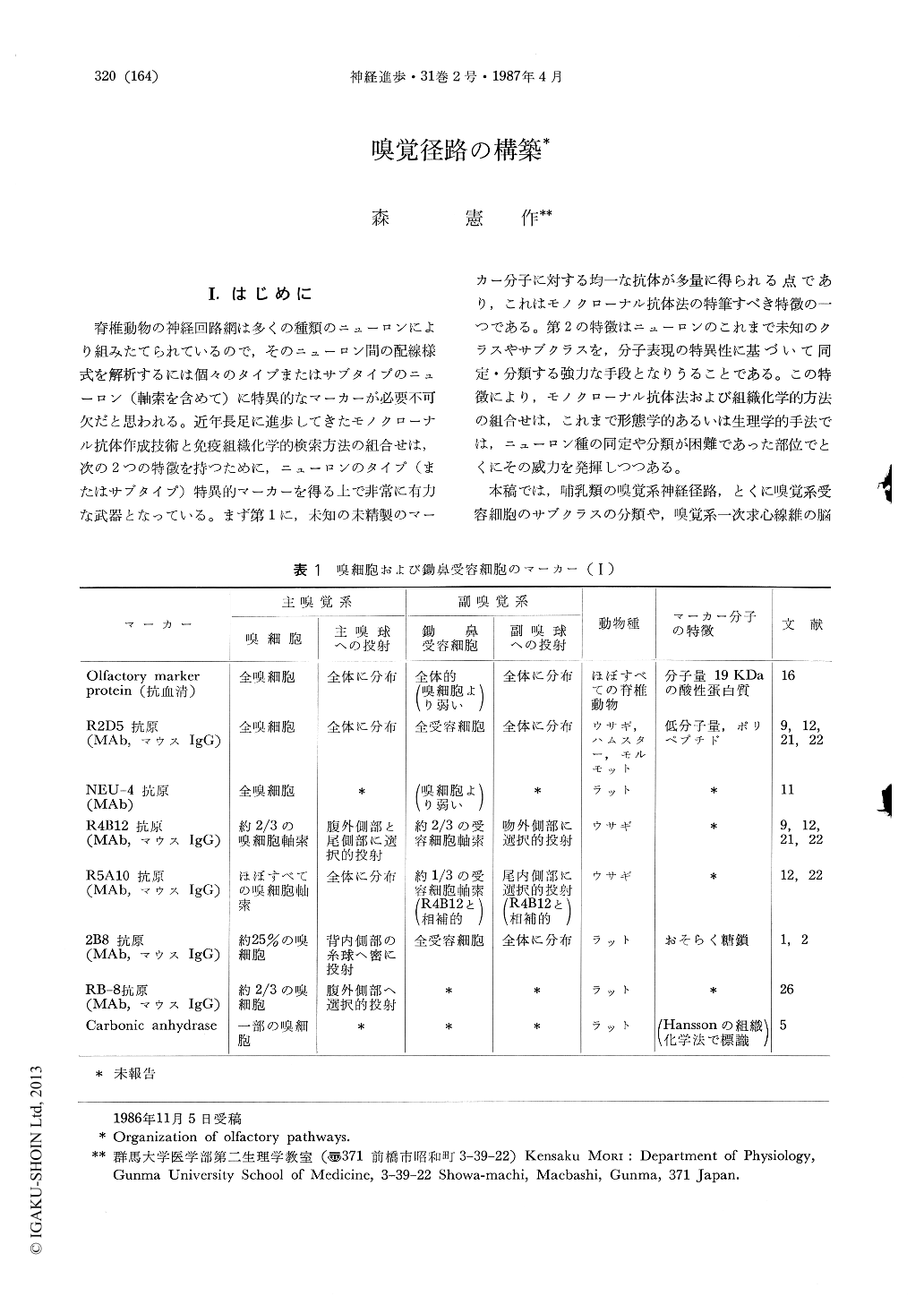Japanese
English
- 有料閲覧
- Abstract 文献概要
- 1ページ目 Look Inside
I.はじめに
脊椎動物の神経回路網は多くの種類のニューロンにより組みたてられているので,そのニューロン間の配線様式を解析するには個々のタイプまたはサブタイプのニューロン(軸索を含めて)に特異的なマーカーが必要不可欠だと思われる。近年長足に進歩してきたモノクローナル抗体作成技術と免疫組織化学的検索方法の組合せは,次の2つの特徴を持つために,ニューロンのタイプ(またはサブタイプ)特異的マーカーを得る上で非常に有力な武器となっている。まず第1に,未知の未精製のマーカー分子に対する均一な抗体が多量に得られる点であり,これはモノクローナル抗体法の特筆すべき特徴の一つである。第2の特徴はニューロンのこれまで未知のクラスやサブクラスを,分子表現の特異性に基づいて同定・分類する強力な手段となりうることである。この特徴により,モノクローナル抗体法および組織化学的方法の組合せは,これまで形態学的あるいは生理学的手法では,ニューロン種の同定や分類が困難であった部位でとくにその威力を発揮しつつある。
本稿では,哺乳類の嗅覚系神経径路,とくに嗅覚系受容細胞のサブクラスの分類や,嗅覚系一次求心線維の脳への投射様式について,上記の方法で得られた最近の知見を中心にまとめてみた。
Most mammals have two relatively independent olfactory systems, the main and accessory olfac-tory systems. The receptor cells of the main olfactory system (olfactory receptor cells) lie in the olfactory epithelium of the nasal cavity and send their axons (olfactory nerve fibers) to the main olfactory bulb. The accessory olfactory system has its receptor cells (vomeronasal receptor cells) in the sensory epithelium of the vomeronasal organ. The vomeronasal receptor cells project their axons (vomeronasal nerve fibers) to the accessory olfactory bulb.
It has long been assumed that olfactory re-ceptor cells are differentiated into at least several functional subsets. However, apparent morpho-logical homogeneity of the olfactory receptor cells has precluded anatomical classification of receptor cell subtypes. Recent progress in the hybridoma technique and histochemical methods has provided evidences that olfactory receptor cells are chemi-cally heterogeneous and can be classified histo-chemically into subsets. This review describes recent advances of our knowledge of subsets of olfactory and vomeronasal receptor cells together with their axonal projection patterns in the main and accessory olfactory bulbs.

Copyright © 1987, Igaku-Shoin Ltd. All rights reserved.


